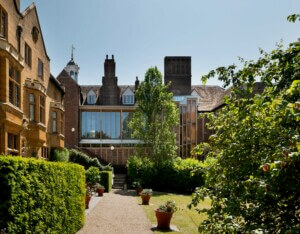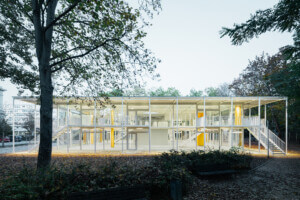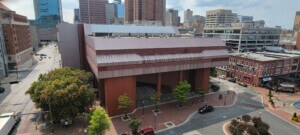Vassar College has changed dramatically since it was established in 1861. The prestigious liberal arts school, originally built for the progeny of aristocrats, now touts one of the most diverse and progressive student bodies in the U.S. James Renwick, Jr. was the campus’s original architect—he also designed the National Mall’s Smithsonian Castle and St. Patrick’s Cathedral in Manhattan. But other luminaries like Eero Saarinen added to the campus in Poughkeepsie, New York, making it a hodgepodge of old and new.
L.E.FT Architects is the most recent studio to make a mark at Vassar. The studio was founded in 2005 by Ziad Jamaleddine and Makram el Kadi, with offices in New York City and Beirut. L.E.FT repurposed one of Vassar’s oldest structures, Pratt House, into a multifaith spiritual center. The historic building’s evolution into the Vassar College Center for Religious Life is emblematic of the institution’s transformation since the 19th century into a multicultural locus for higher learning predicated on pluralism.
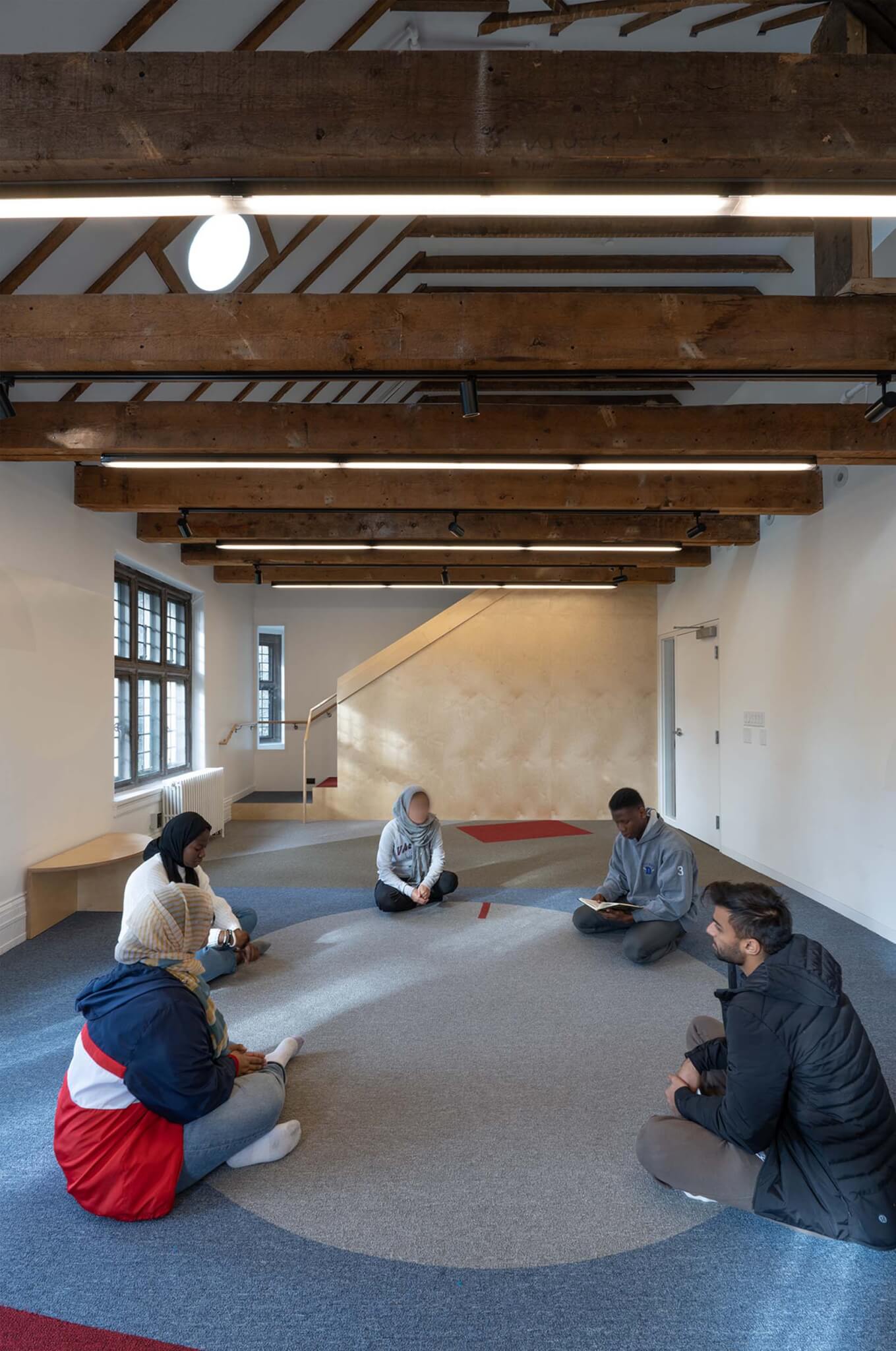
Pratt House is a 3-story masonry building gifted by Charles M. Pratt, a wealthy industrialist and Vassar trustee. It was completed in 1915 to function as the warden’s house, designed by York & Sawyer Architects. Thanks to the renovation by L.E.FT Architects, Pratt House has been transformed from a bourgeois residence into a haven for students of all faiths to worship, reflect, and respectfully debate one another. “As a multifaith center, we really did not want to turn the building into the type of interfaith spaces we see at airports,” Jamaleddine told AN. “You know? Like a generic, gray room with a carpet, lacking in identity, that tries to be for everybody, but inevitably alienates everyone,” he continued. “Instead, our idea was not to eliminate differences but to find the common ground; the acceptable overlaps and layering between religious groups, as opposed to trying to find some sort of neutral ground.”
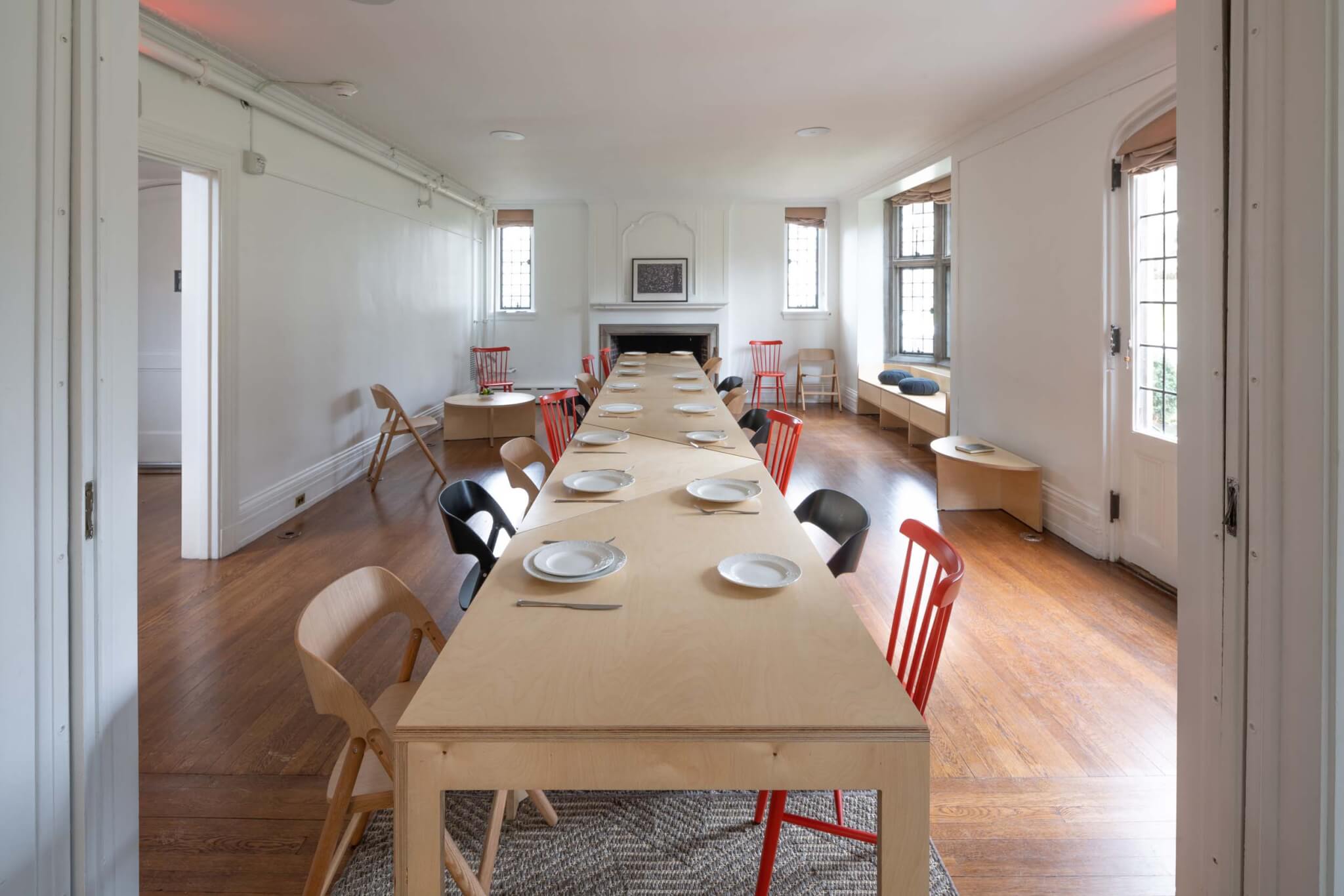
During schematic design, L.E.FT Architects found precedents in religious buildings from around the world that have been able to accommodate varied religious groups over time, notably Istanbul’s Hagia Sophia and the Great Mosque of Damascus. The next step was applying the lessons learned from both case studies to a much smaller building—and budget. “It was interesting for us to work on such a domestic, intimate scale,” Jamaleddine said, “as opposed to the religious, celebratory, monumental scale. We believe that the domestic is a much more appropriate scale for the religious student community—and spiritual community, for that matter, in the 21st century. They don’t need a big, monumental, symbolic statement, just spaces that work for their needs.”
Renovating the structure from 1915 into a modern, energy-conscious, ADA-compliant building was challenging. But most of the original materials were preserved or repurposed: For example, wood planks and stones were upcycled throughout in doors, walls, floors, and exterior landscaping.
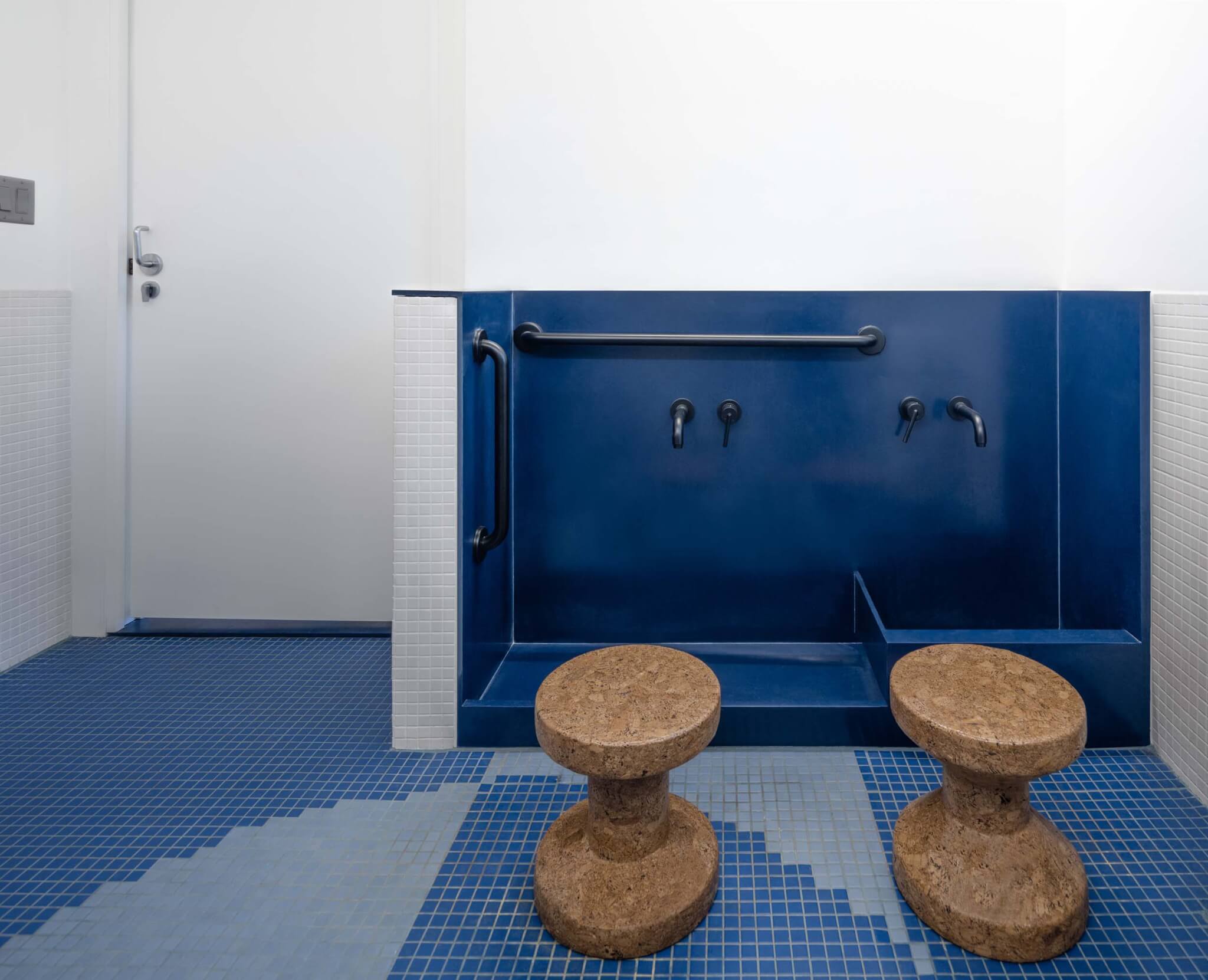
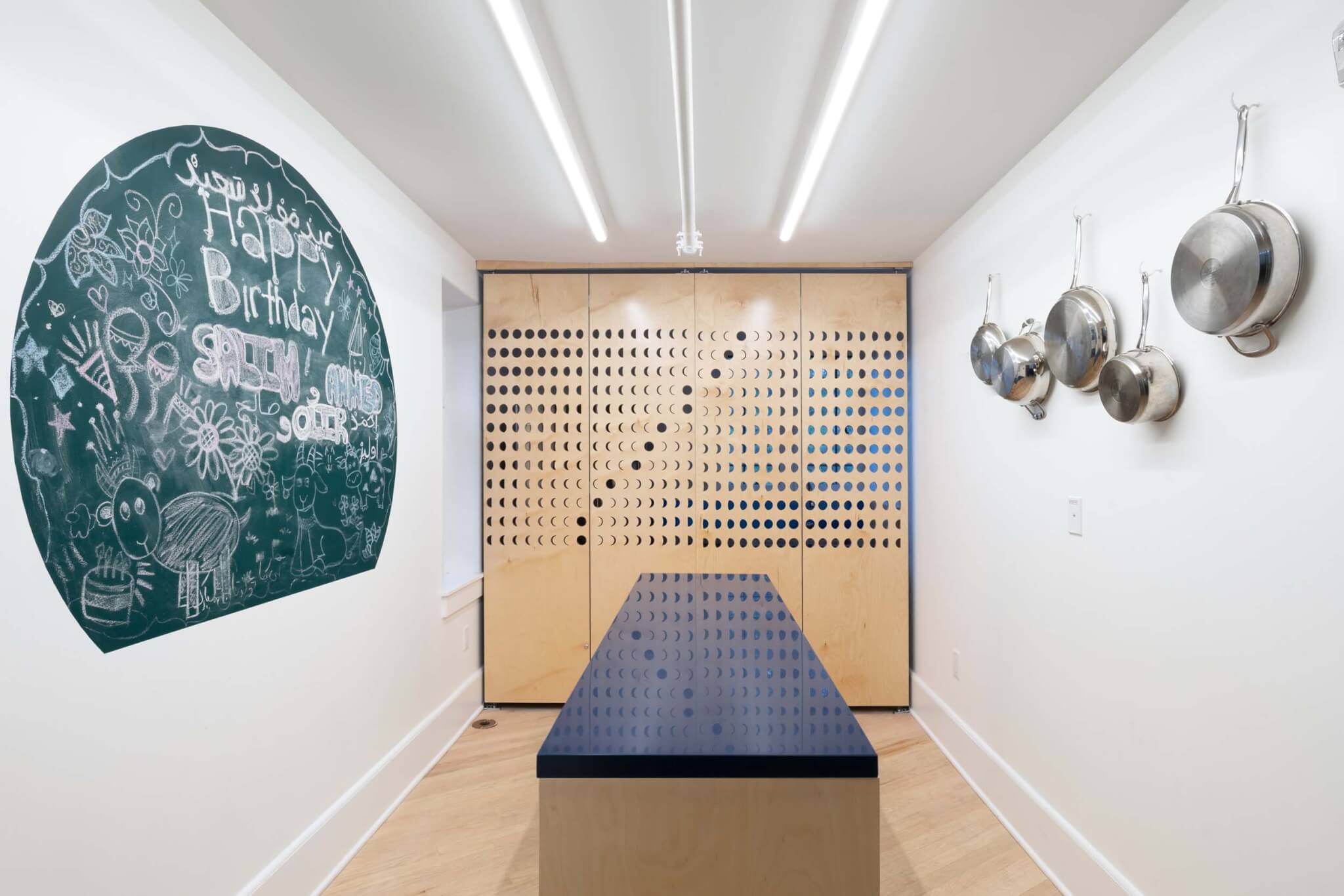
Within Pratt House, L.E.FT kept the building’s existing kitchen intact and inserted a second “ritual kitchen” into the envelope, fitted with all accoutrements necessary to provide adequate dining space for diverse religious practitioners. Solutions ranged from an extralong Iftar dining table to a kitchen that works as both a kosher and a halal cooking area. The ground level has offices for staff, a wadu station (or ablution sink) for religious groups that perform ritual washings before prayer, and a conference room. A second-floor ceiling slab was removed to create a light-filled, multistory prayer space crowned by wooden rafters.
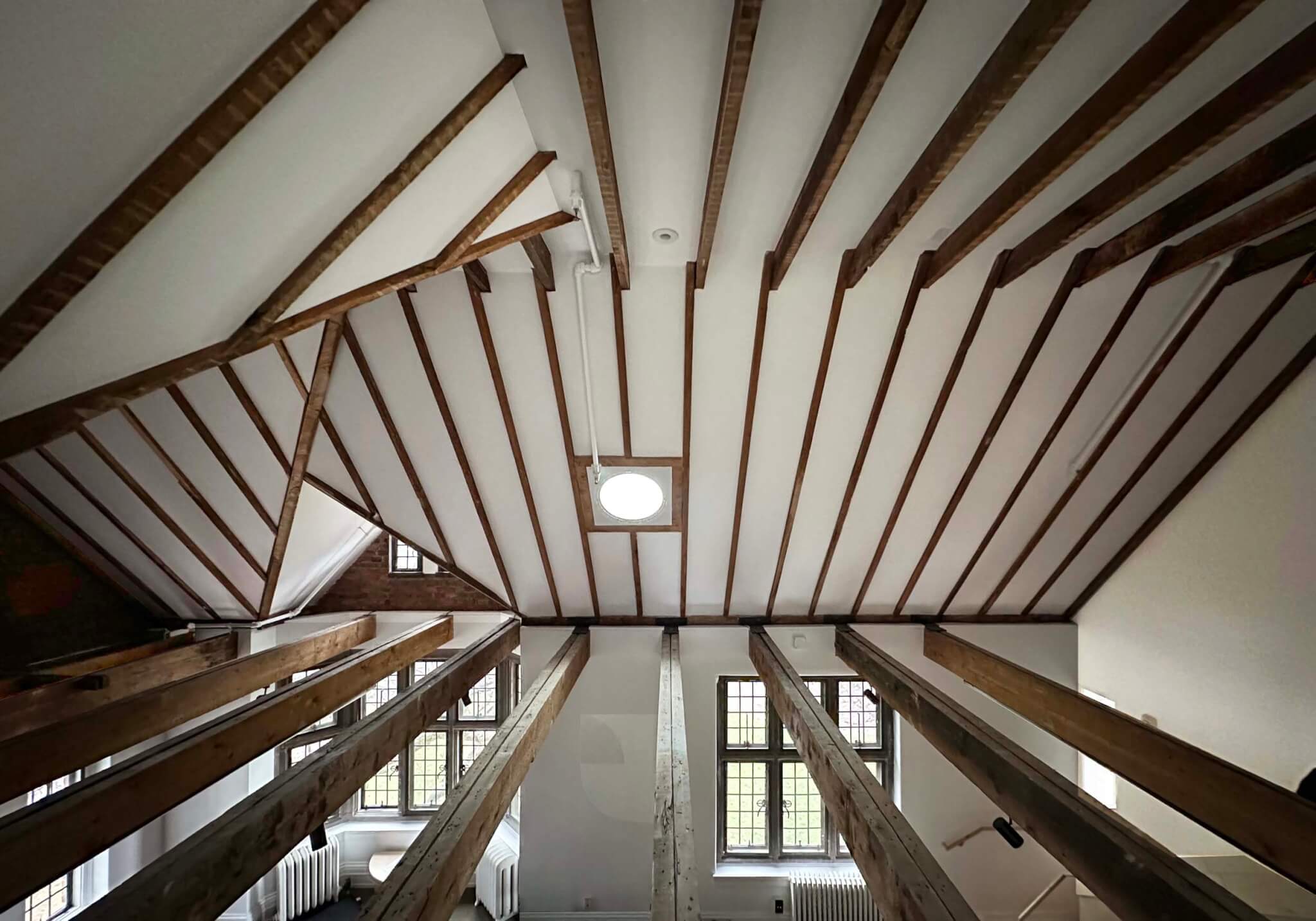
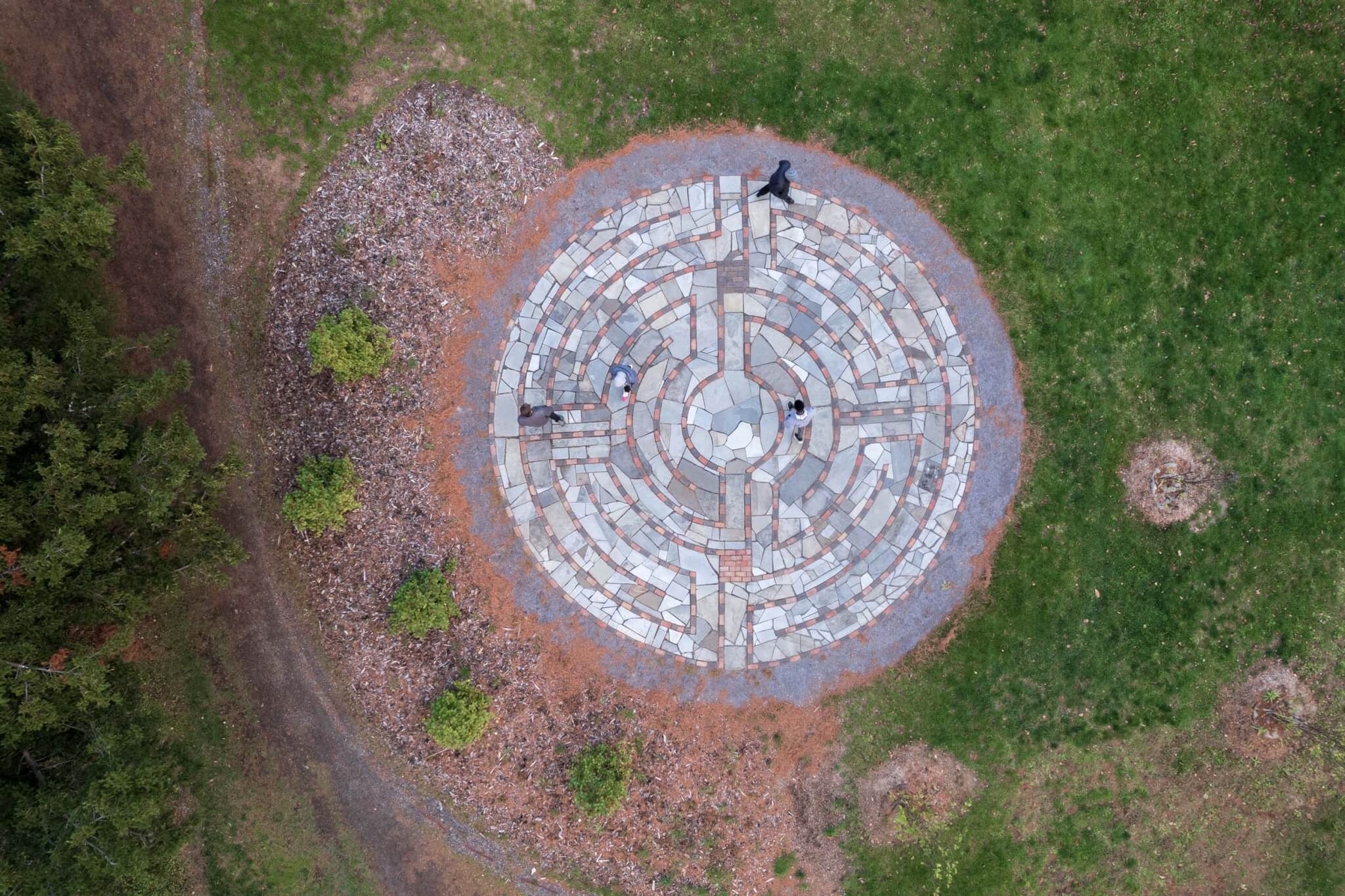
The ablution sink where worshippers wash themselves before prayer required a custom design, but the ADA Codebook from the Department of Justice is “secular,” meaning it doesn’t prescribe how to design compliant religious fixtures. Therefore, Jamaleddine looked at countries around the world, namely Malaysia, for design inspiration. The result is a beautiful, custom-made wadu easily accessible to individuals in wheelchairs and painted a warm powder blue.

Just outside, a labyrinth codesigned by L.E.FT and faculty members at Vassar who specialize in ancient ritual sites is nestled in the ground. The labyrinth is made of surplus building materials that general contractors working for Vassar accrued over the years, contained in a part of campus known colloquially as “the Boneyard.” With his team, Jamaleddine cataloged every piece of material there, and the resulting labyrinth is a beautiful new form made from Vassar ephemera.
“It’s a very iterative process,” Jamaleddine said. “We often talk with the director about new possible pieces, and changing the space, and how to adapt the space for student needs.”








